Buenos Aires is more than the capital of Argentina—it is a city full of color, history, and passion. From tango halls and world-class museums to lively neighborhoods and sizzling steakhouses, it mixes European elegance with Latin American soul.
Arrival in Buenos Aires
The city has two airports: Ezeiza, about 22 kilometers from downtown, and Aeroparque, located inside the city. Traveling from Ezeiza is simple. Buses are affordable and take 45 to 60 minutes. A ticket costs only a couple of euros. Taxis are faster and usually cost around €25–30. For safety, always book at the official taxi stands in the arrivals hall.
La Boca: Street Art and Tango
Start your journey in La Boca, one of the most colorful neighborhoods in Buenos Aires. Its heart, Caminito, is filled with brightly painted houses, murals, and dancers performing tango in the streets. The area feels touristy, yet it remains authentic thanks to its energy and art.
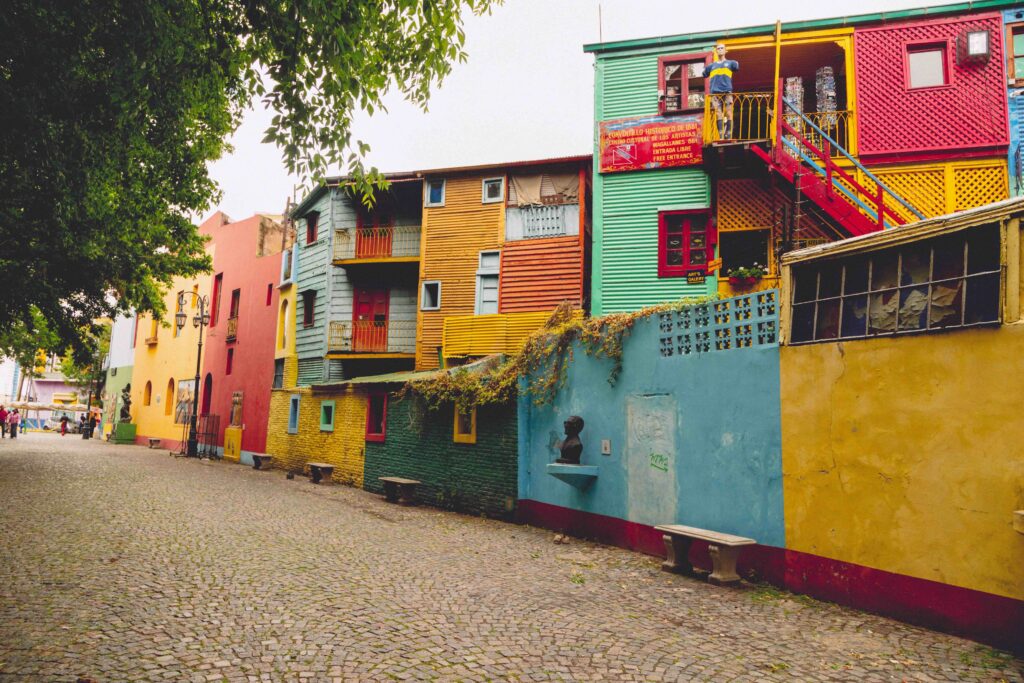
Moreover, it is home to La Bombonera, the famous stadium of Boca Juniors. Football here feels more like a religion than a sport.
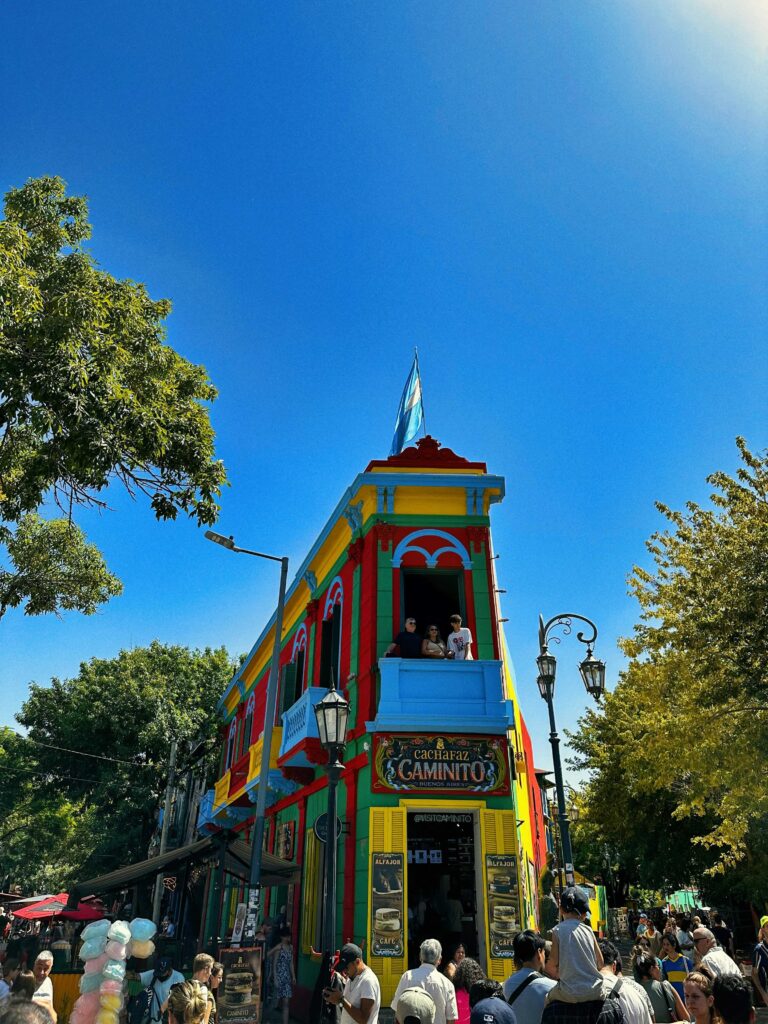
San Telmo: Vintage Charm
Next, head to San Telmo, just a short walk from La Boca. This neighborhood is famous for cobblestone streets and antique shops. On Sundays, Plaza Dorrego turns into a lively market. You will find vintage records, old maps, and handmade souvenirs. Street performers and tango couples make the market feel festive. In the evening, San Telmo transforms again, with bars and tango clubs full of music and atmosphere.
Plaza de Mayo and the Historic Center
The historical heart of Buenos Aires is Plaza de Mayo.
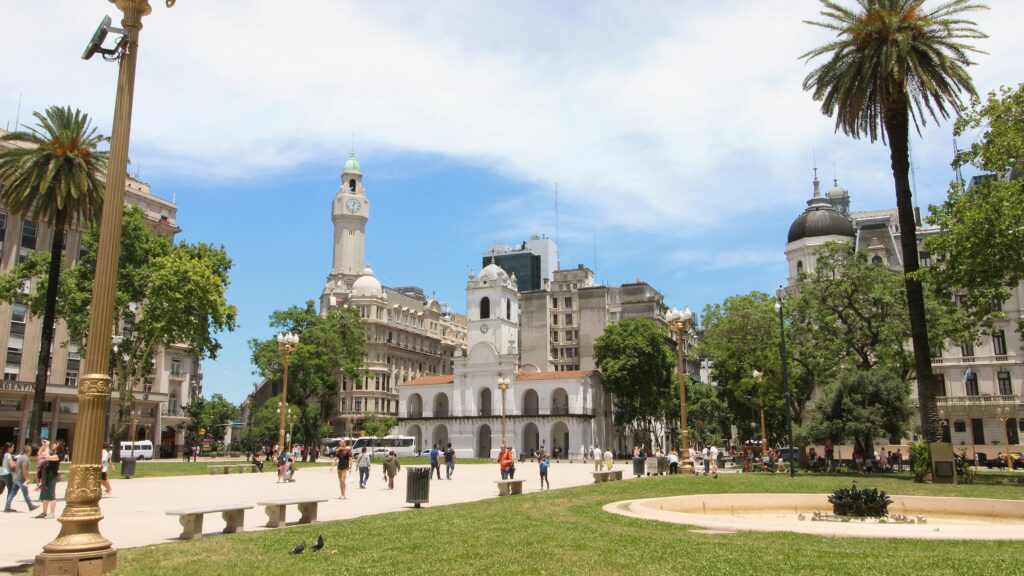
The square features the Casa Rosada (the pink presidential palace), the Metropolitan Cathedral, and the Cabildo (colonial town hall).
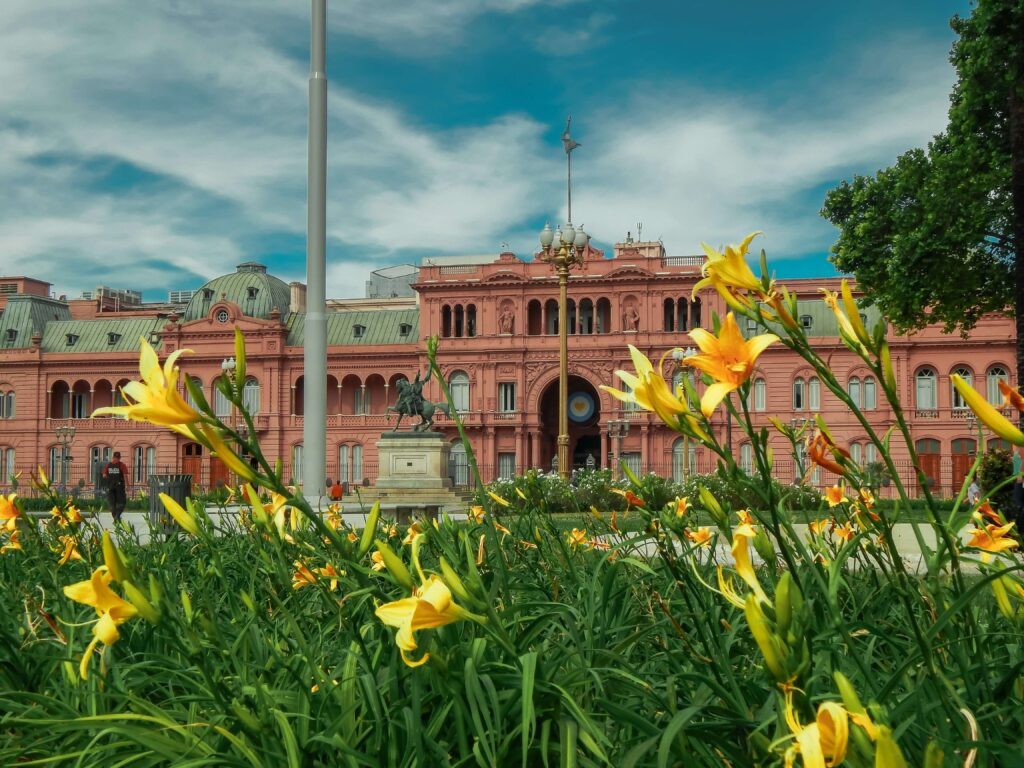
Throughout history, revolutions, protests, and presidential speeches all took place here. Therefore, visiting Plaza de Mayo connects you directly to Argentina’s turbulent past.
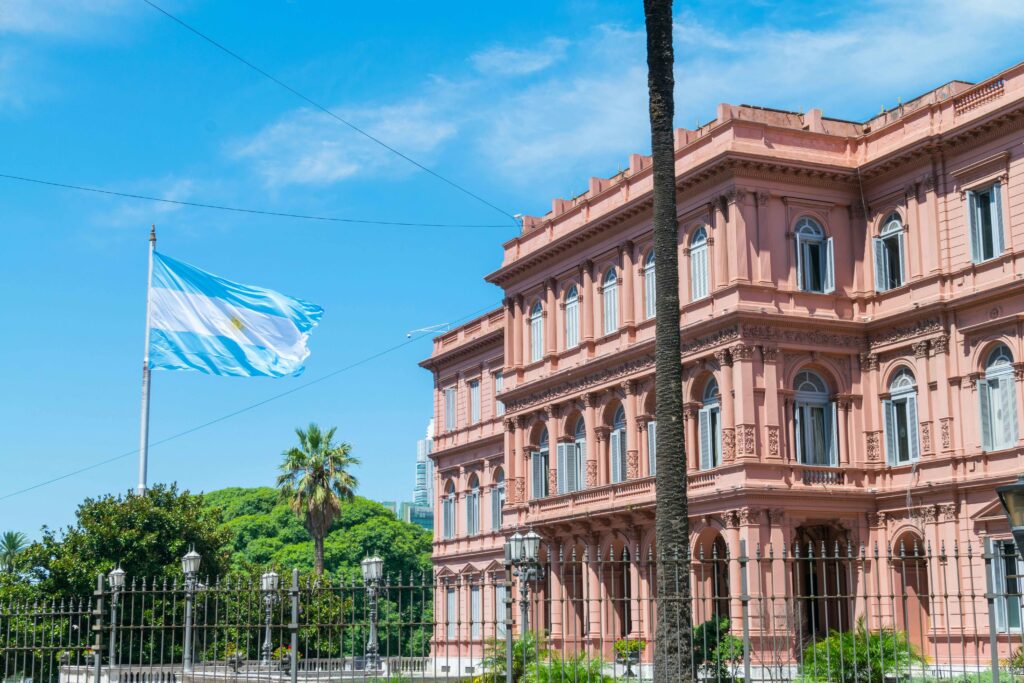
The Obelisco and Avenida 9 de Julio
At the center of Avenida 9 de Julio, one of the widest boulevards in the world, you will find the Obelisco. Built in 1936, it commemorates the city’s 400th anniversary. Today, it is one of Buenos Aires’ most recognized symbols. Around it, theaters, cafés, and traffic create an intense energy.
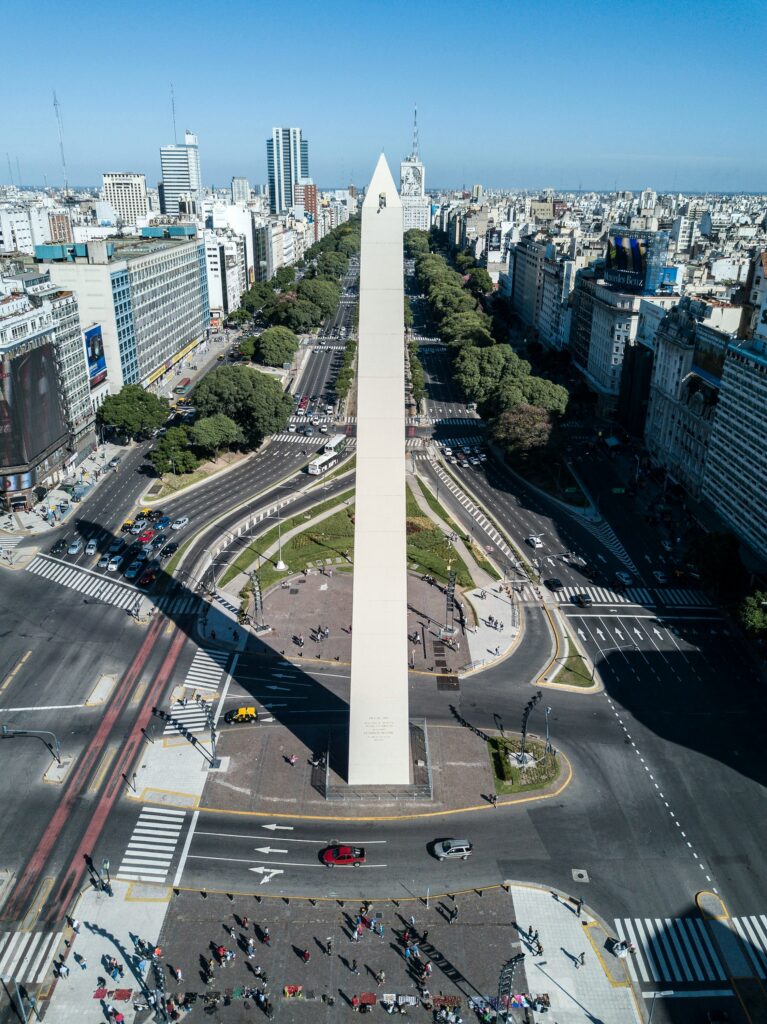
Teatro Colón: A Jewel of the Arts
Close to the Obelisco stands Teatro Colón, one of the most celebrated opera houses in the world. It opened in 1908, and people admire it for both its acoustics and design. Guided tours take you into its golden halls, marble staircases, and chandelier-lit foyers. Even if you skip a performance, the tour itself is worth it.
Recoleta: Elegance and Legacy
Recoleta is one of the city’s most elegant districts, filled with French-style avenues, plazas, and cafés. However, the highlight is the Recoleta Cemetery.
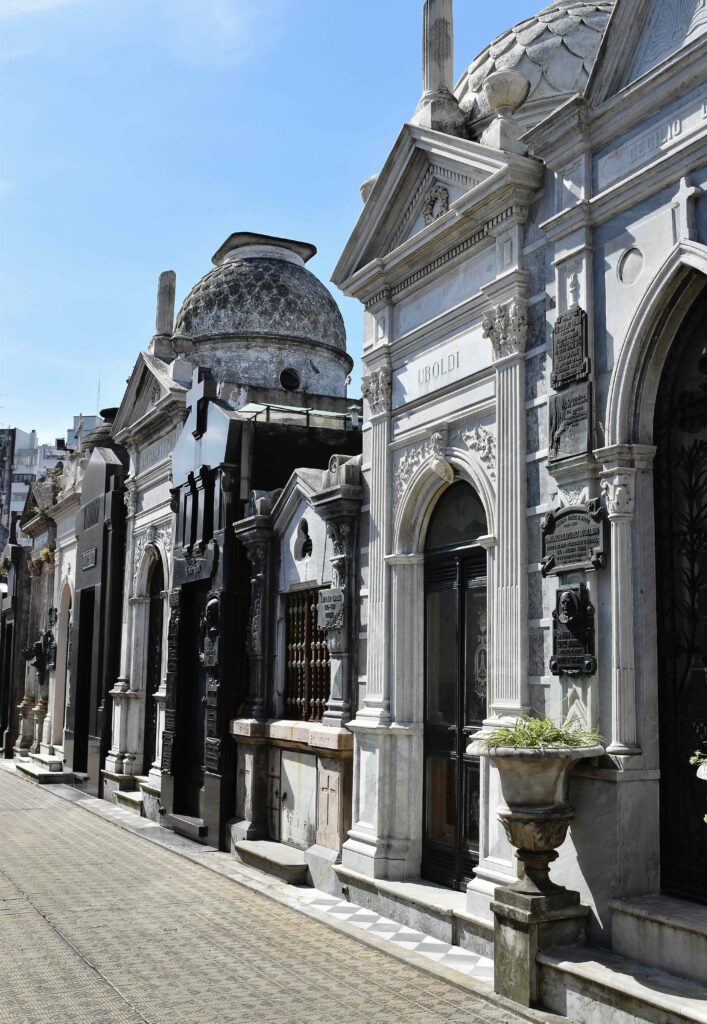
Walking through its gates feels like stepping into another world. Almost 5,000 mausoleums line the paths, each unique in style and design. Many of Argentina’s most important figures rest here. Among them is Eva Perón (Evita), whose tomb attracts flowers and visitors every day.
The variety of architecture is striking. Some vaults look like Gothic chapels, others resemble Greek temples or Art Nouveau sculptures. Several were built with Italian marble and French ironwork. In addition, the contrast between polished mausoleums and abandoned ones adds a haunting charm.
Do not miss:
- The Church of Nuestra Señora del Pilar (1732), one of the city’s oldest churches.
- The famous Recoleta cats, beloved residents of the cemetery.
- Free walking tours that reveal the stories behind the graves.
Ultimately, the cemetery feels like a history book in stone. It tells the story of Argentina’s elites, politics, art, and tragedies in silence.
Palermo: Trendy Streets and Nightlife
The vast neighborhood of Palermo is Buenos Aires’ creative hub. Palermo Soho and Palermo Hollywood feature stylish boutiques, street art, cafés, and many of the best restaurants in the city.
By day, Palermo is perfect for wandering and brunching. By night, it becomes one of the hottest nightlife districts. Rooftop bars, craft beer pubs, and dance clubs stay open until dawn. As a result, Palermo never seems to sleep.
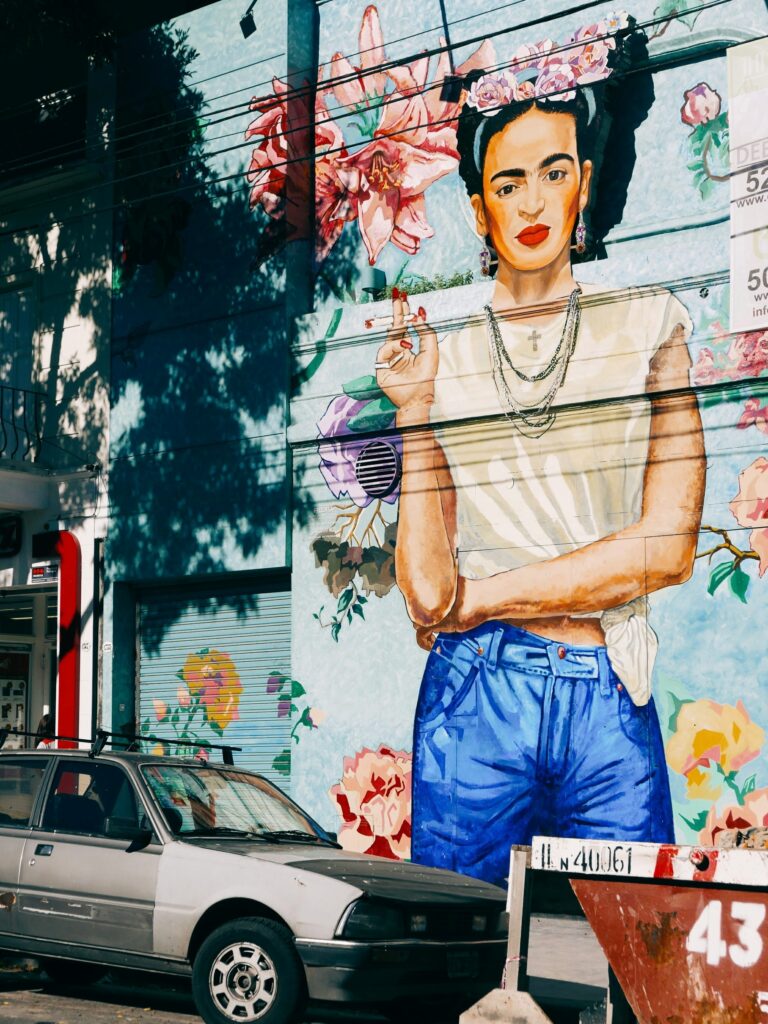
Puerto Madero: Modern Waterfront
For a modern contrast, visit Puerto Madero. Once an old port, it has become a sleek waterfront with glass towers and upscale dining. The elegant Puente de la Mujer, designed by Santiago Calatrava, completes the scene. It shows how Buenos Aires balances history with modern style.
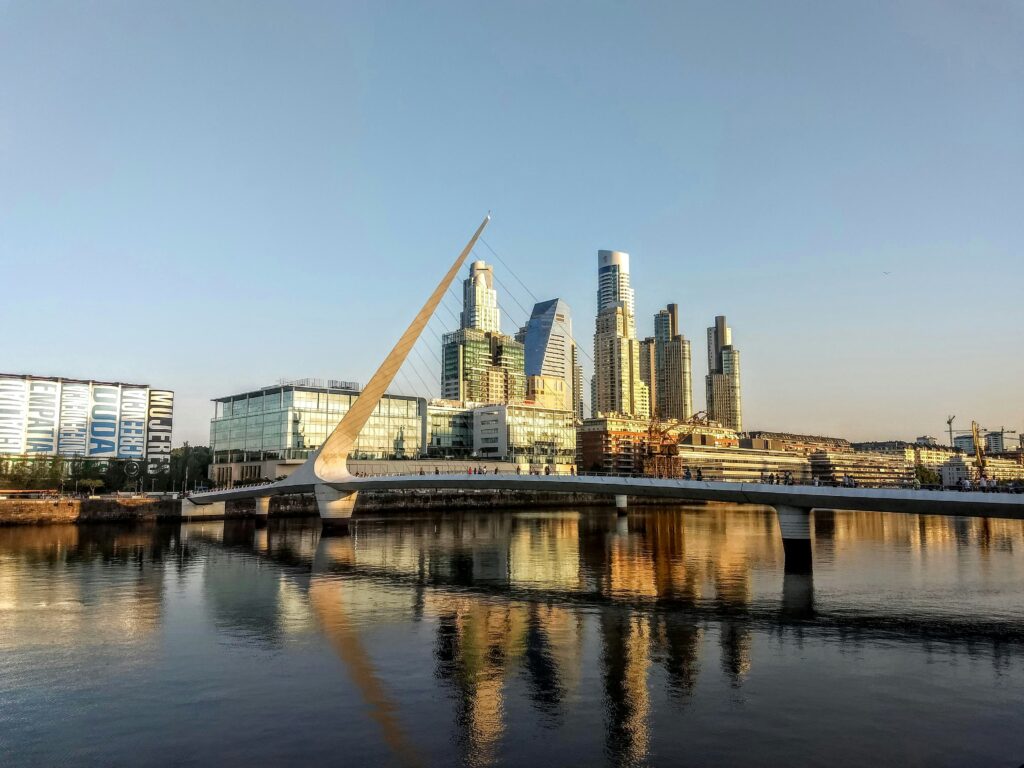
Museums and Art
Art lovers will find endless options. The Museo Nacional de Bellas Artes displays European masters and Argentine painters. Meanwhile, the MALBA (Museo de Arte Latinoamericano de Buenos Aires) focuses on Latin American modern art, with works by Frida Kahlo and Diego Rivera. In addition, street murals in San Telmo and Palermo make the entire city feel like an open-air gallery.
Football: A City’s Religion
Football is not just a sport in Buenos Aires—it is life itself. Watching Boca Juniors at La Bombonera or River Plate at El Monumental is unforgettable. The chants, drums, and passion turn the stadium into a cauldron of emotion.
Food and Flavors
Argentine food is both simple and powerful. Be sure to try:
- Asado, the traditional barbecue cooked over open flames.
- Empanadas, stuffed pastries that work well as a snack.
- Choripán, grilled chorizo in bread, sold on street corners.
- Dulce de leche, a caramel-like spread in cakes, pastries, and ice cream.
In addition, pair your meals with a glass of Malbec wine. And share a cup of mate, the herbal tea that Argentines enjoy every day as part of their social ritual.
Tango: The Soul of Buenos Aires
Buenos Aires is the birthplace of tango, and its rhythm still flows through the city. You can experience it in many ways: watch an elegant show, join locals at a milonga (dance hall), or simply stop to admire couples dancing on the streets of San Telmo or La Boca. Tango isn’t just a dance—it’s the heartbeat of the city.

0 thoughts on “Buenos Aires: The Ultimate Travel Guide”
Comments are closed.